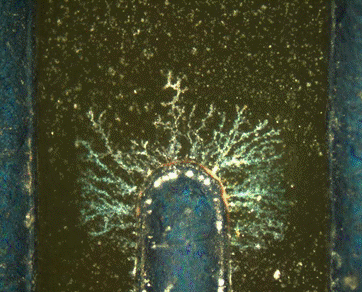22.02.2021
PCB Ionic Contamination Test


Reliability experts contend that roughly 30 percent of PCBA failures are due to contamination of the bare PCB, and only an estimated 2 percent of contaminated PCBs are sent back to the fabricator for re-cleaning. This is largely because of a basic misunderstanding of the correlation between PCB contaminants and product failure.
When received in-house, bareboards can carry contaminants or “soils”—plastic, metal, and fiberglass particulate residues, as well as salts, oils, and dust—from either the fabrication process or environmental exposure. If residues are left on the board, major problems—electrochemical migration, corroded open traces, parasitic leakages, and dendritic growth—can potentially lead to in-process nonconformance or shorts during the product’s lifecycle. To prevent rework and late lifecycle failures, as well as ensure the boards' overall reliability, the newly received bareboards must be tested for soils. In general, this is done using an ionic tester.
An ionic tester uses a combination of Isopropyl Alcohol (IPA) and deionized water to rinse the board and collect a sample of possible residues. The sample is then tested for resistance (conductivity), which indicates the board’s soil levels. High resistance (low conductivity) is the goal. This is indicated by the pass/fail limit (PF), which is expressed in µg (Meg-Ohms of resistance) per square inch. If the tested PCB exceeds a 10 PF (as designated byT IPC-M-650 standards and military specifications 2000A and 208809), residue is too high. A lot should be inspected per your Acceptable Quality Limit (AQL) standards. This will indicate a PCB lot’s conformance; non-conforming lots should then be rejected and sent back to the fabricator for re-cleaning.
Tip: Make sure to calibrate the ionic tester before each test according your needs. Pay special attention to your solution resistance (expressed as µg) and the IPA and deionized water ratio (75% IPA to 25% deionized water, at ODA) for accurate testing.
Post-Assembly Ionic Testing
Ionic testing on fully assembled boards is generally not conducted unless specifically requested by a customer. Some components run a higher risk of damage from the full liquid submersion ionic testing requires.

This post originally appeared on the DigiSource Blog


